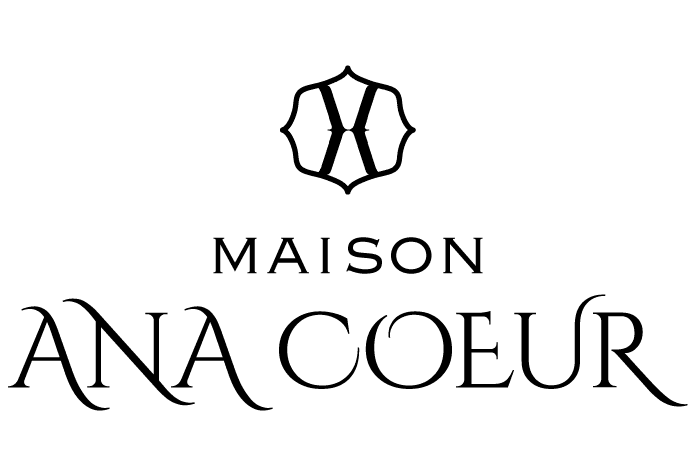Does your sales copy pass all 6 copywriting tests? How to convert website visitors into paying clients using the Mighty Sales Conversion Page
I‘ve got a ton to teach you today about copywriting, so let’s jump right in.
Today’s topic is about The Mighty Sales Conversion Page, Lallabon–style. Your sales page is supposed to sell (no duh), but did you know that it serves at least SIX additional functions? I’m going to get to that by the end of this lesson, so hang tight with me. We’re going on a sales ride today!
So picture this: You’re sitting down with your notebook, brainstorming ideas for your next big thing to sell. A bolt of creative inspiration strikes you and out comes this magnificent idea that you can’t wait to market to your audience. The only thing you need to do right now is to figure out what to write on your sales page and post the buy button on your website, baby! Easy peasy!
As you sit down to come up with copy, your mind draws a blank. What to say, what to say? The next thing you do is visit the websites of your peers, hoping to get a glimpse of what sales pages other people are putting out there.
With every sales page you see, your frustration builds and a sense of defeat overcomes you. You cannot imagine writing reams and volumes of content this long. Plus, these sales pages all appear long–winded, talking in circles, repetitive, manipulative and never getting to the point. The price, of course, is buried all the way down the page which takes ten continuous minutes of scrolling to find.
By the time you find the price on the sales page, your mousing hand is exhausted and you’re likely discouraged, lost and annoyed. This copywriting research experience probably led you to believe that long sales pages only create frustration and impatience for the buyer, and that you vow to never do that for your own business.
I mean, even if you did, you don’t know how you can possibly morph into this type of cunning fox and vomit this much content from your fingertips.
Every so often, my copywriting students remark to me that the hard–to–find price is one of their biggest pet peeves about sales pages. Their concern is that the potential customer will have a hard time finding the cost and leave because of it. Valid point.
Let’s talk this through. Let’s pretend for a second that a potential customer — Zoey — is in the market for an offer just like yours. She finds your long sales page. Perhaps to your dismay, Zoey’s behavior is exactly as you predicted. She’s interested in buying but she can’t find your price. She frantically scrolls and scrolls and scrolls through all your content looking for the dollar sign and buy buttons. When she finds them, she purses her lips and then exits your website completely, never to return.
Did you just lose a sale?
Do you think Zoey was really a potential client?
Let’s take a moment to observe Zoey’s behavior:
What you will notice is that Zoey is not particularly interested in your idea or message. It’s true — we know that she scrolled right through your sales copy talking about your offer, how you’re different, all your bullet points and carefully written paragraphs about your promise and value. At best, she scanned it halfheartedly.
Zoey’s attitude is that she doesn’t need or want to know. Why? We don’t know the reason for sure.
What we do know for sure is that Zoey is making a beeline to find out your price. As she scrolls, she mutters, “Come on, come on, where is the damn price?”
This behavior screams out a most crucial piece of sales information:
She who scrolls is shopping by price only.
That’s right. Just the price, baby. Nothing else matters.
After Zoey learns your price, she may scroll back up and read the rest of your copy to see if your idea fits her needs. But her doing so doesn’t change the fact that price is the only or the most important factor in determining whether Zoey purchases.
Uh oh. Red flag. Lookout for unideal customer.
Here is why you do not want to waste energy marketing to clients who shop solely based on price. Zoey’s thinking is such that:
• Price is primary. Everything else is secondary.
• I value the price tag more than the quality of the product/program/service.
• I cannot see your value. All I care about is the price.
• Whether we are a good fit or not doesn’t really matter.
• As soon as you raise your price, I’m leaving and buying elsewhere.
As an empowered entrepreneur, this is the kind of customer I hope you will steer away from marketing to. You want to grow with your audience, in the sense that as you gain confidence in marketing yourself and seeing your own value, you want your audience to be able to see that in you too, and to validate your vision by buying your higher end offerings.
Starting from Day 1 of your business, don’t market yourself as a commodity. Don’t compete with others based on price.
But let’s say that you do start off by marketing yourself as a commodity and you compete with others based on price. As you serve more clients, learn about yourself and stand in your light, you start to become aware of your value and how much you’re changing people’s lives. I need to start charging more, you say to yourself.
You login to your shopping cart software and bump up that price, maybe $200 more than what you used to charge. You give your service a fancier sounding name and create some kind of theme around it. The big announcement goes up on your website, Facebook page and newsletter, but unfortunately, your new offer just sits. Nobody buys and the silence is deafening.
When you start off your business by marketing yourself as a commodity, you’re going to cultivate an audience of that mindset. Because you’ve seen yourself as a commodity, so too does your audience. As soon as you raise your price, you’re going to lose those people. But as soon as you offer a deep discount, they’re gonna come right on back – fast. Like waving bacon in front of a hungry dog type of fast.
At best, here’s what’s going to happen: you’ll first raise your price and then immediately offer a deep discount along with it. So, instead of charging $200 per item like you used to, you’re now going to charge $400 per item and tag a 50% coupon with it. Ever seen that happen at department stores? Rather than giving you 50% off, they’ll raise the price first and then the discount later, so it gives off the impression that you’re getting spectacular savings. But in actuality, you’re paying the same price.
If you do that, here’s the danger: your price-conscious audience will continue being blind as a bat to your value, to who you really are, and to the million levels of awesome that you bring to the world.
If you offer discount after discount after discount, what kind of impression do you think you’re giving? A positive one, or a negative one?
If you’re raising incrementally or by not much, you will still bring in sales through the door. But what if you’re at the point now where you’re ready to create that $6,000 program? Or that $15,000 service? Or that $50,000 unique opportunity?
To make a short story long, here’s the point I’m trying to make:
The purpose of an epic novel sales page is to dive straight into your ideal customer and to speak to them only. The purpose is to weed out the commodity–driven, price–only, unideal customers from those who are ideal.
It means that if you have ever been someone else’s Zoey, you were never that person’s ideal customer to begin with. That means, you cannot base your perceptions of what makes a good sales page based on being someone else’s unideal customer.
You need to forget everything that you think you know about sales copy. You need to stop rejecting the long sales page for just–because reasons and start recognizing its effectiveness in generating sales.
To be fair, there are a lot of crappy, manipulative sales pages out there where the message runs in circles and the graphics badger the customer like trying to catch prey.
By the time I work with entrepreneurs, most of you are already at this place: unimpressed, offended and hate selling. The truth is, the Mighty Sales Conversion Page is your best sales partner and here’s why:
We already know that the purpose of having a sales page is to sell (no duh, right?). But there are other functions to sales copy that aid you in the selling process.
The Six Other Complementary Functions of Your Sales Copy
1. Mighty sales copy strategically presents you as a valuable asset and a treasured brand. It removes the impression that your services are a dispensable, dime–a–dozen commodity. Because of that, you get to charge more money (and get it).
2. Mighty sales copy communicates compelling talking points that build trust and remove doubt (which go hand-in-hand). Because of that, people feel comfortable buying from you, even if you’ve just met.
3. Mighty sales copy makes your potential buyers genuinely like you and want you, not annoyed with or unimpressed by you. Because of that, a desire–based connection unfolds (as in, “I want you in my life”) and it creates the foundation for a strong, long–term relationship.
4. Mighty sales copy is an intuitive reverberation where you ping your ideal customers and show them a mirror where they can see themselves inside the vision you painted. Because of that, they give you the greatest possible gift — their loyalty.
5. Mighty sales copy assists unideal customers to automatically deselect themselves from ever contacting you just to pretend to buy, waste your time, or buy but then create myriads of customer service problems for you.
6. Averages sales copy helps people close sales 10 to 20 percent of the time, but Mighty sales copy helps you close 70 to 80 percent of the time (in my personal experience). The higher quality your copywriting, the easier the selling process, the less time it takes to sell, and the more favorable the outcome.
These are the Six Characteristics of Mighty Sales Copy That Sells, which is my high standard of sales copy that I teach and help entrepreneurs write.
If you need a writing partner to copy jam with you + a sales mentor to show you the ropes to doing business, enroll in my virtual one–on–one copywriting mentorship where you and I write all your sales content together.
Hi, I’m Ana Coeur

intuitivepicture.com
Schedule a free assessment of your website and business
Show me your website and I’ll share with you what I sense and what we can accomplish together. Here’s how to book your free assessment:


No Comments